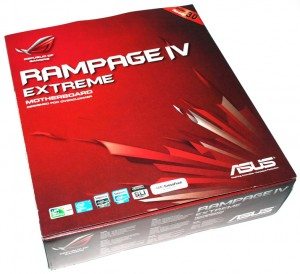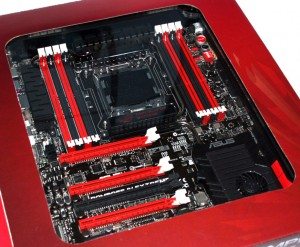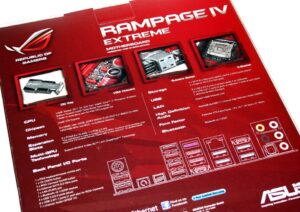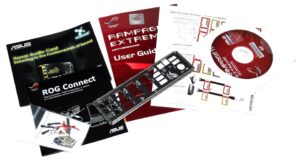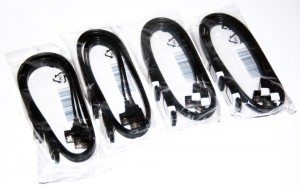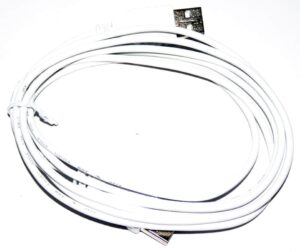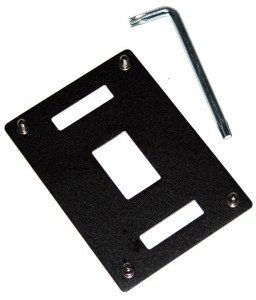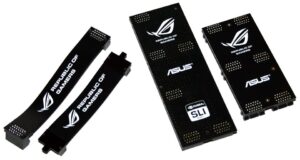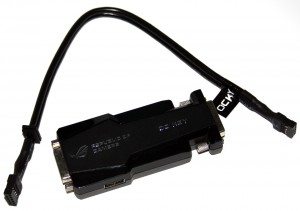Asus Rampage IV Extreme X79 Motherboard Preview
Andy Ruffell / 13 years ago
The front of the box is typically what we’d find on a ROG style product with a red colour scheme and the main key points highlighted down the bottom right. The model name is spread across the front and Asus make it clear to mention in the top right corner that it’s PCIe 3.0 Ready.
Keeping in typical fashion, we find that the front of the box works as a flap, which simply opens up to reveal some of the new key features that Asus have invested into this board including the addition of the OC Key, among other unique features that are exclusive to this particular board.
By opening this flap up, it does reveal a first glance at the board and what’s generally going on with the design and the colour scheme, but we’ll take a lot more in-depth look into this as we continue on through the article.
Flipping the box over reveals a specification list and a lot of the main features highlighted again, as we saw on the inside of the box.
Just like any ROG based board, we aren’t short on accessories and added extras, including a Xonar audio card leaflet, ROG connect guide, Asus Probelt connectors, I/O panel shield plate, user guide, case-badge sticker, technical update sheet, stickers and drive installation disc.
It simply doesn’t end there though, as we find that a whopping EIGHT SATA cables come included, so you should be more than catered for when it comes to storage.
Keeping in with the ROG feature and ROG connect, the specialist ROG Connect cable is included so that you can tweak things from another system or laptop.
Due to X79 being said to take over from X58, we find Asus and the ROG team supplying a different style backplate to allow users to use the majority of socket 1366 coolers that they may already have, making the upgrade transition as painless as possible.
Now this is where it starts to get interesting as they supply you with a whole bunch of connectors for use with multiple GPU’s including a CrossFireX connector, a single SLI connector, a tri-SLI bridge and even a stonking four-way SLI bridge.
One of the coolest new features that has been bundled is the OC Key which slots in between your graphics cards display output and the monitor’s DVI cable to provide an OSD style overlay on your screen for use when monitoring your system and overclocking on the fly. This adapter allows any settings to be changed and saved directly to the EEPROM, even when in Windows or a game. More on that feature in our review when this product launches, and we can honestly say, it’s not one to be missed.
